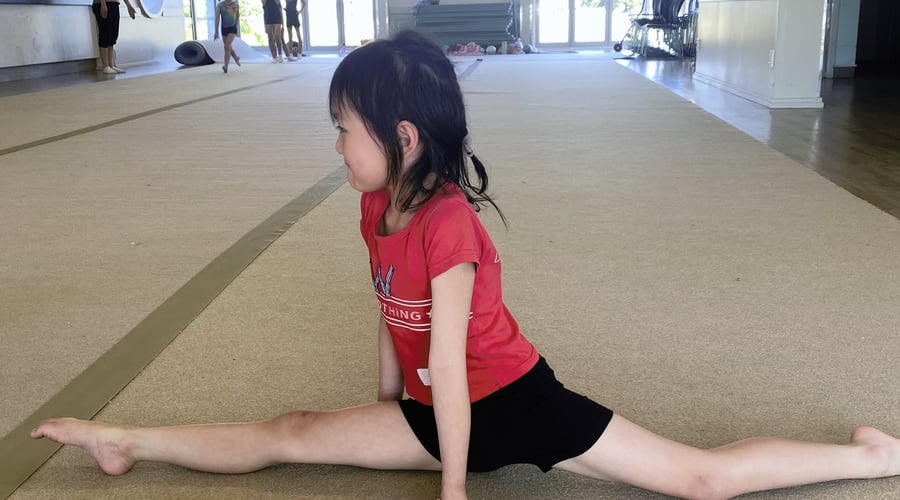The Importance of Stretching and Flexibility in Gymnastics: Key to Injury Prevention and Performance Improvement
In gymnastics, flexibility is more than just a useful skill—it's a key factor in a gymnast’s success. Whether performing leaps, working on a vault, or learning new skills, being able to stretch and move with ease is crucial for achieving control, precision, and staying safe. At Olympia, we focus on the importance of stretching and flexibility exercises in our training to help prevent injuries, enhance performance, and ensure our gymnasts continue to grow in their abilities safely.
Preventing Injuries with Stretching
Flexibility is a key factor in injury prevention. In gymnastics, athletes push their bodies through a wide range of movements, from high-impact landings to complex maneuvers. Without proper flexibility, the risk of strains, sprains, and muscle tears increases. That's why stretching is incorporated into every training session at Olympia from preschool all the way through to our advanced competitive classes. Regular stretching helps improve your range of motion, which allows your muscles and joints to move freely without injury. It also helps reduce muscle tightness, which is a major factor in injury. With improved flexibility, gymnasts are be able to move more fluidly, lowering the risk of muscle strains or joint stress.
Stretching Routines: When and How to Stretch
Stretching routines and flexibility exercises are incorporated at key points during training. Before practice, dynamic stretches prepare the body by gently warming up muscles and joints. This type of stretching, which involves controlled movements such as leg swings, arm circles, and lunges that we play in warmup games, helps the gymnast prepare for the intense activity ahead. Once the muscles are warm, static stretching follows, allowing the gymnast to hold stretches for an extended period to increase flexibility over time. These stretches focus on various parts of the body, including the hamstrings, hips, back, shoulders, and ankles, all of which play significant roles in gymnastics performance. (TIP FOR GYMNASTS: Stretching should always be performed gently, avoiding overstretching or pushing too hard, as this could lead to injury rather than improvement.)
Flexibility Builds Confidence and Mental Resilience
At Olympia, flexibility is practiced not just for its physical benefits but for its role in building a gymnast's confidence and mental resilience. When gymnasts have a level of flexibility, they feel more capable in their abilities, knowing they can perform difficult skills without restriction. This confidence translates into improved performance, as gymnasts are more likely to take calculated risks, try new skills, and push themselves toward new goals. Additionally, flexibility plays a role in overall body awareness, which helps gymnasts refine their techniques and become more mindful of their movements during routines.
Long-Term Success Through Consistent Flexibility Training
Incorporating flexibility into a gymnast’s routine doesn’t just contribute to immediate performance—it sets the foundation for long-term success. Flexibility improves over time with consistent practice, allowing gymnasts to perform at their highest level, prevent injuries, and continually refine their skills. By making stretching a regular part of training, gymnasts can ensure they maintain the flexibility needed to excel in every area of the sport, from the floor to the bars, beam, and beyond into other sports and life later on.
If you have any questions about flexibility training or would like to learn more about our gymnastics programs, feel free to reach out. We’re here to help you and your child build a strong, flexible foundation for success in gymnastics and life!
Contact: emma@olympia.org.nz


